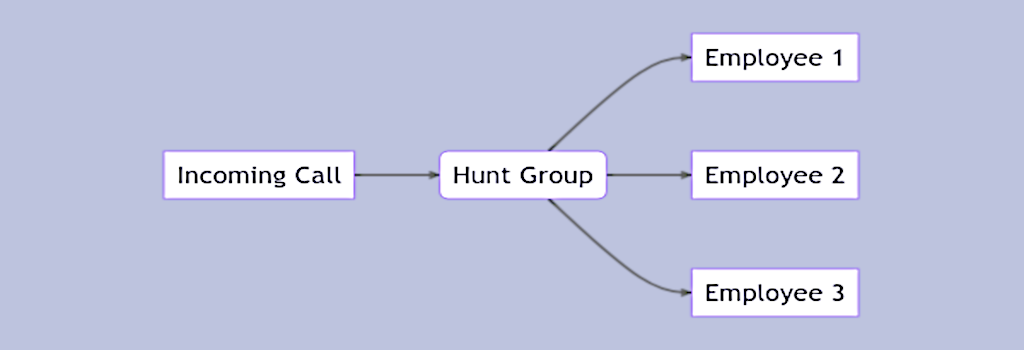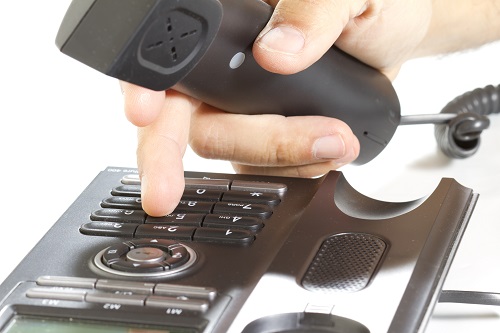Telephone Hunt Groups: A Smart Solution for Small Business Owners
As a business owner, you’re always looking for ways to improve your operations, reduce costs, and streamline processes. Optimizing your phone systems is an area where you can make a significant impact, and one way to accomplish this is through the use of telephone hunt groups. In this article, we'll delve into what hunt groups are, how they work, and the benefits they can bring to your business.
What is a Telephone Hunt Group?

A telephone hunt group, also known as line hunting or ring hunt group, is a group of phone lines that are programmed to ring together in a specific order when a call comes in. The goal is to ensure that incoming calls are answered quickly, efficiently, and by the most appropriate person. Sending incoming calls to a group reduces dropped calls, which potentially enhances sales opportunities and customer satisfaction.
More sophisticated intelligent call routing systems came later, to provide more advanced call handling options using algorithms to determine how incoming calls are directed. For example, these systems can take into account several factors like caller ID, call volume, time of day, and agent availability. Intelligent call routing systems also offer more advanced features like queuing, routing based on the specific skills or language proficiency of available agents, and real-time calculations of wait times. These features were typically used by larger organizations and professional call centers and required specialized, expensive, on-premise equipment.

Hunt groups can be implemented in both cloud based and premise based phone systems. Cloud based solutions, also known as virtual phone systems, are typically more flexible and less expensive to set up. They also make it easier to set up distributed hunt groups in which the group members can be located anywhere, rather than tied to physical equipment located in an office. Cloud based hunt group solutions usually offer features typically associated with more sophisticated intelligent call routing systems.
How Do Hunt Groups Work?

Hunt groups usually work in connection with inbound routing systems such as automated attendants to allow callers to select an appropriate group or deparment depending on the nature and purpose of their call.
Once a particular department is chosen and a call is sent to that group, it is routed to the first phone line in the hunt. If that line is busy or unanswered, the call is then routed to the next phone line in the group, and so on until the call is answered. This ensures that every call is answered by someone in the group, reducing the likelihood of missed calls and increasing customer satisfaction.
Common strategies for routing calls include:
Sequential hunt
In a sequential hunt group, employees are tried in a strict order for each new inbound call. The sequential hunt always attempts to connect to Employee 1 first, then 2, and so on. This approach makes sense for smaller organizations where a single individual has expertise to handle certain inquiries and others are added to the group as backups to avoid dropped calls. If the call is not answered by any member of the group, the call is sent to voicemail.
Round robin hunt
The round robin hunt strategy is similar the sequential hunt, except that the starting point for each new call changes to distribute calls amongst members of a group. For example, the first call comes in and is routed to Employee 1, 2, 3 in order. The next call is then routed to 2, 3, 1. And after that, to 3, 1, 2. This strategy is often used when a group of employees have equal skill, for example in a support group, and there is a desire to have each member handle a fair share of inquires.
Parallel hunt
In this strategy, all members of a group are alerted simultaneously and connecting to the first employee to pick up. Akin to a “jump ball” in basketball, this strategy may result in faster answer times. However it creates the possibility that employees who are not first to pick up will be needlessly disturbed with call alerts that appear to be dropped calls.
Note that in a traditional hunt group system, calls are not queued if there are no employees available to answer the call. Unanswered calls are rolled over to a voicemail system. This is appropriate for most small businesses where dedicated live agents aren't always available to answer incoming calls.
Benefits of Hunt Groups for Small Business Owners

As a small business owner, you’re always on the “hunt” for ways to improve the efficiency of your business operations. Telephone hunt group systems offer many benefits:
Improves customer service
By ensuring that every call is answered promptly and by the most appropriate person, you can significantly improve customer service. This can lead to fewer missed sales opportunities and higher customer satisfaction.
Increases efficiency
Telephone hunt groups can help you make the most of your resources. By routing calls to the most appropriate employee, you can ensure that each is handling calls relevant to their skills and expertise. This can lead to increased efficiency and productivity, and improves the likelihood of first call resolution.
Saves time and money
Telephone hunt groups can save you time and money as a small business owner by reducing dropped calls, which lessens the time wasted on excess “phone tag” often associated with voicemail messages. This increases the productivity of your staff as well as enhances your customer’s perception of your business.
Adds Flexibility
Telephone hunt groups are highly customizable, allowing you to tailor your phone system to your unique needs. You can set up different hunt groups for different departments or functions, ensuring that calls are handled efficiently and effectively.
Factors to Consider When Choosing a Hunt Group System

It’s easy to get overwhelmed with features and technical jargon relating to hunt groups and call routing. When choosing a telephone hunt group system, keep in mind that simplicity is often best if your needs are modest. When shopping for a hunt group solution consider the following:
Size of your organization
The size of your organization will determine the number of lines required in the hunt group. A small organization may only require a few lines and simple call rollover, while a large organization may require many lines to be available at the same time along with sophisticated features such as call queuing, agent idle time routing, and dynamic wait time calculations.
Required features
The hunt group system should have the necessary features to support your organization's needs, such as call forwarding, voicemail, call waiting, and caller ID. Ideally, you don’t want to pay for complex features that you’ll never use and require extensive training.
Scalability & reliability
The system should be scalable to accommodate future growth and changes in your company’s communication needs and have a long track record of success with business similar to your own.
Cost
The cost of the system should be considered, including the initial setup cost and ongoing maintenance and support costs. Keep in mind that the sticker price of a given system does not include the time and effort you need to invest to adopt the system and train your employees. It’s easy to pick a solution that is loaded with bells and whistles but miss the mark in terms of fit with your business needs.
Best Practices for Using a Hunt Group System

To get the most out of a hunt group system, consider the following best practices:
Create groups representing functional departments in your company
Even if a function is covered by a single person in your company, it is better to identify that as a department rather than as a person to your callers. For example, “Press 3 for billing” in your auto attendant greeting rather than “Press 3 to connect to Mary.” Callers don’t necessarily know that Mary works in billing.
Train your employees on how to use the system
Make sure that your employees know how to set up their extensions and log in to the system to accept hunt group calls. Many systems allow employees to be able to set work schedules and manually opt out of calls. This is important to speed up the hunt process by elminating members who are not able to take incoming calls.
Keep your hunt groups up to date
It’s very important to keep the membership of your hunt groups up to date. Remove employees who have left your company or have been reassigned to different departments. Nothing is more wasteful than having callers wait on hold while trying to connect to extensions which are no longer valid.
How to Set Up a Telephone Hunt Group

Setting up a telephone hunt group is relatively straightforward. Here are the basic steps:
- List the functional groups in your company that are required to handle inbound calls. Typically, sales and support groups are separated to handle pre- and post-sales inquires. Other common departments include billing, shipping, and returns.
- Create user extensions for your employees and assign them to your groups according to their skill and job description. In some cases, you may have a group based on a specific language ability, which may necessitate someone who is assigned to handle a wide range of inquiries relating to your company in a particular language.
- Configure the hunt group on your phone system: This will involve programming the order in which the extensions will ring and setting up any other parameters, such as the number of rings before the call is forwarded to voicemail.
- Next, configure your inbound routing rules so that calls can reach your hunt group via an auto attendant or via dedicated DID phone numbers.
- Test the hunt group: Once the hunt group is set up, test it to make sure that calls are being routed correctly and that every phone line in the group is functioning properly.
- Train your employees on how to log in to your hunt group system and how to make adjustments to their forwarding preferences, set their availability status, and block calls when the need arises. Effective training is key to reducing call wait times and improving customer experience.
Frequently Asked Questions about Hunt Groups
Conclusion
In conclusion, telephone hunt groups are an effective and efficient way for small business owners to improve their phone systems, increase customer satisfaction, and reduce costs. By taking advantage of this powerful tool, small business owners can make the most of their resources and improve their operations.
With over 20 years of service, thousands of customers have relied on Halloo for their hunt group and smart routing needs. Learn more about how Halloo can help enhance your communications and grow your business.
From the Halloo Blog
Privacy policy · Terms of service
Copyright © 2023, Halloo Communications, Inc. All rights reserved.


